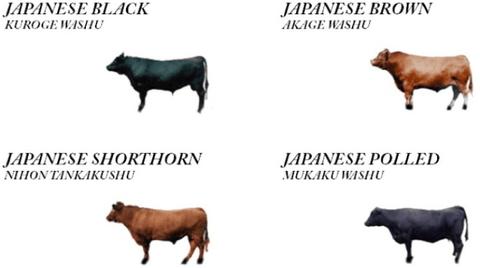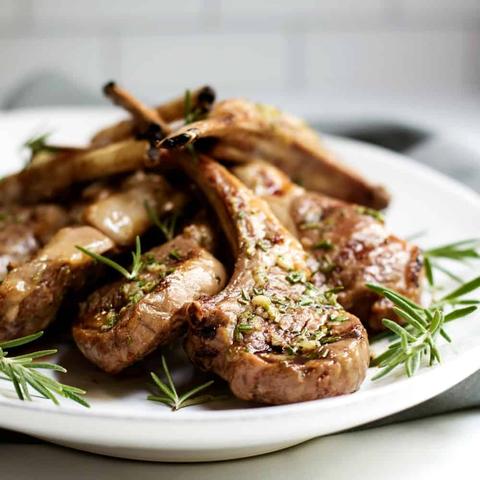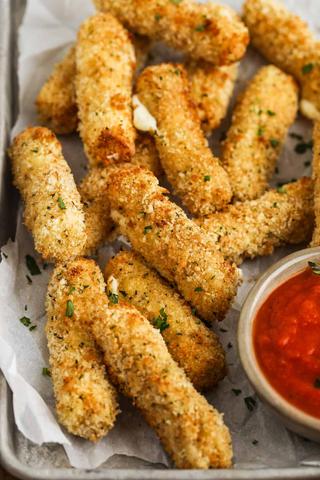
Let me clear something up first: The Grilla Grills Mammoth Vertical Smoker Gas-Electric is a pellet smoker, not gas or electric. It burns wood pellets. Just so we’re on the same page.
I’ve tested dozens of smokers over the years. Most do the same thing with different branding. The Grilla Grills Mammoth vertical pellet smoker? This one’s different.
It completely changed how I think about pellet smoking.
Why I Decided to Try a Vertical Smoker

View Deal Here
Check Price on Amazon
I’ll be honest. I was skeptical about vertical pellet smokers. They seem like a compromise. Not as popular as horizontal models. Not as traditional as cabinet smokers.
But my deck’s tiny. I needed more cooking space without taking up my entire patio.
The Mammoth caught my eye with some wild claims. Runs for two days on one hopper? Smokes in any weather? Holds enough meat for 50 people?
I had to see if it was real or just marketing BS.
Spoiler: It’s real.
The Grilla Grills Mammoth Vertical Smoker Gas-Electric Dimensions Actually Work

The measurements sound big on paper: 59 inches tall, 28 inches wide, 28 inches deep. Weighs 130 pounds.
When it arrived, I thought I’d made a mistake. This thing looked massive.
But here’s the clever part: those Grilla Grills Mammoth dimensions use vertical space instead of horizontal. It takes up less than three square feet of my deck. Yet I get 1,660 square inches of cooking space.
My wife didn’t even complain. That’s a miracle.
You can add more racks to push capacity to 3,300 square inches. That’s insane efficiency.
My old horizontal pellet grill sprawled across half the deck. I had to squeeze past it constantly. The Mammoth stands in the corner like a refrigerator. I can walk around it easily.
The four casters let me roll it wherever I want. Though you have to use them. The legs alone won’t hold it up. Grilla built it that way on purpose.
Just make sure your deck is level. This thing gets top-heavy when you load it with meat.
Grilla Grills Mammoth Assembly Was Surprisingly Easy

I hate assembling grills. Instructions that make no sense. Missing parts. A grueling three-hour task that can easily lead to arguments.
The Grilla Grills Mammoth assembly shocked me.
It showed up mostly built. I just attached the legs, wheels, and a few external pieces. That’s it.
The instructions actually made sense. Clear pictures. Logical steps. What a concept.
It took me 30 minutes. Maybe 40 if you’re taking your time.
Could I do it alone? Yeah, probably. But I grabbed my neighbor. He held things while I tightened bolts. Much easier with two people. Plus this thing weighs 130 pounds. I didn’t want to throw out my back.
Everything lined up perfectly. No bent parts. No mismatched holes. No cursing.
One complaint: no cover included. For $1,400, they should throw one in. But you can buy the Grilla Grills Mammoth cover separately for $60. I did. It keeps rain and snow off.
After assembly, you season it. Run it at 400°F for 45 minutes to burn off factory chemicals. Standard procedure for any new grill.
The digital controls made this simple. Set temperature. Wait. Done.
Then I was ready to smoke.
Testing the 40-Pound Hopper: Does It Really Run for 48 Hours?

Every pellet grill makes big claims. “Cook all day!” “Massive capacity!” “Revolutionary efficiency!”
Usually it’s exaggerated. Marketing hype that doesn’t match reality.
The Mammoth says it runs 48 hours at 250°F on one hopper fill. I didn’t believe it.
So I tested it. Filled the hopper completely. Two full bags of pellets. Set it to 225°F. Put two pork butts on the grates. Closed the door.
And left it alone.
Nine hours later, I checked. The hopper was still three-quarters full.
I did the math. At this rate, I could easily hit 40 hours. Maybe more.
The pork butts took 22 hours total. When I pulled them, the hopper still had half its pellets. I could’ve kept smoking for another full day.
This changes everything. Overnight brisket? No problem. Multi-day smoke sessions? Totally doable.
No midnight refills. No anxiety about running out. Just set it and actually forget it.
The secret is double-wall insulation. Less heat escapes. Less fuel needed. Simple physics that actually works.
The Insulation: Why This Smoker Works So Well

Most pellet grills use single-wall construction. Maybe an insulated lid. That’s it.
The Mammoth? Double-wall insulation everywhere.
This matters more than you’d think.
Temperature stays stable. Fuel burns efficiently. The weather doesn’t matter. Smoke stays inside.
I’ve used pellet grills where smoke pours from every crack. Door gaps. Body seams. You’re basically fumigating your entire deck.
The Mammoth seals tight. That heavy latch clamps the door shut. Smoke stays where it belongs.
I walked around it while cooking. Checked every seam. Almost zero smoke leaking out.
This isn’t just about looks. Escaped smoke means escaped heat. Escaped heat means burning more pellets. More pellets means more refills.
The insulation also handles weather perfectly. Cold day? No problem. Windy? Doesn’t matter. Raining? Keep cooking.
I’ve owned pellet grills that struggled in winter. The temperature swings. Constant adjustments. Special blankets.
The Mammoth doesn’t need blankets. Ever. It handles whatever weather I throw at it.
My neighbor smoked during a snowstorm. Said temperatures stayed rock solid. That’s the insulation at work.
The Controller: Alpha Connect 2.0 Actually Delivers

The controller can make or break a pellet grill. Bad controllers mean temperature swings. Frustration. Ruined meat.
The Mammoth uses Alpha Connect 2.0. It’s genuinely good.
Temperature range: 180°F to 450°F in five-degree steps. Precise control for whatever you’re cooking.
Pro Smoke mode cranks up smoke output. Want deep bark and heavy smoke flavor? Turn this on. It works.
TempTamer is brilliant. Opening the door usually crashes temperatures. You wait 15 minutes for recovery.
TempTamer fixes this. The controller compensates fast. Temperatures stabilize quickly.
This matters when you’re spritzing meat. Or checking doneness. Or just peeking because you can’t help yourself.
The WiFi lets me control it from my phone. Monitor temperatures from inside. Make adjustments from the couch.
Two meat probe ports come standard. Two probes included. I can monitor multiple pieces at once.
The digital screen is easy to read. Bright enough for daytime. Not blinding at night. Simple interface that makes sense.
My First Cook: The Real Test

View Deal Here
Check Price on Amazon
Specs don’t matter if the food sucks. Time to talk about actual results.
First cook: two pork butts. I wrapped one in foil partway through. Left the other naked the whole time.
This tests smoke penetration and bark. Can the Mammoth deliver real BBQ flavor?
Twenty-two hours later, I had my answer.
Both butts were incredible. Deep brown bark. Clear smoke rings. Meat that pulled apart effortlessly.
The unwrapped butt had bark that looked competition-ready. Crusty outside. Tender inside. Perfect contrast.
The wrapped one stayed moister but still had excellent smoke flavor. That smoke got in before I wrapped it.
In my experience, pellet grills can sometimes taste bland. While they’re incredibly convenient, I often find the smoke flavor weak. It’s almost felt like someone whispered ‘smoke’ at the meat from another room.
Not this. The Mammoth delivered a real smoke flavor. Actual bark formation. Depth that satisfied my picky standards.
I’ve done multiple cooks since. Pulled ham. Brisket. Ribs. Chicken. Every single one exceeded expectations.
The vertical design creates heat zones. The bottom runs hotter. The top runs cooler. You can use this strategically.
Need to render fat fast? Bottom rack. Want slow and gentle? Top rack. Different meats with different needs? Stack them smart.
The five racks (you can add more) give incredible flexibility. I’ve done entire party spreads in one cook. Ribs on one level. Chicken on another. Sausages hanging from hooks. Sides on the bottom.
It’s like having five smokers in one box.
Cleaning: Actually Pretty Easy
Vertical smokers have a built-in advantage: gravity.
Everything drips down. Grease. Drippings. Ash. All falls to the bottom.
Grilla says to line the bottom with aluminum foil. Most brands tell you not to. But in a vertical design, foil doesn’t block airflow.
This makes cleanup ridiculously easy. Pull the foil. Toss it. Put in fresh foil. Done.
The grates clean like any grill. Scrape them hot with a brush. Food comes off easily.
Grilla recommends vacuuming ash every 24 hours of cook time. Grab a shop vac. Suck out the ash. It takes five minutes.
The water pan catches drippings. Empty it after each cook. Wash with soap and water. Simple.
Compare this to horizontal pellet grills where you’re removing multiple pieces and reaching into weird corners. The vertical design just makes more sense.
The grates are stainless steel. They won’t rust. They hold up well. Quality materials throughout.
How It Compares to Camp Chef XXL Pro
| Feature | Camp Chef XXL Pro | Grilla Grills Mammoth |
|---|---|---|
| Fuel Type | Wood Pellets | Wood Pellets |
| Smart Control | Yes (Wi-Fi & Bluetooth PID Controller) | Yes (Alpha Connect 2.0 Wi-Fi PID Controller) |
| Temp. Range | 150°F – 350°F | 180°F – 450°F |
| Cooking Area | ~1,806 sq. in. (Standard) | ~1,660 sq. in. (Standard) |
| No. of Racks | 7 Racks (3 meat, 3 jerky, 1 hanging) | 5 Racks (Standard, expandable to 10) |
| Hopper Capacity | 18 lbs | 40 lbs |
| Construction | Powder-Coated Steel | Insulated Double-Wall Steel |
| Key Features | Ash Cleanout System and Grease Management System | Heavy-duty insulation for all-weather cooking & pellet efficiency |
Who Should Actually Buy This Thing?
This isn’t for everyone. Let’s be real.
If you cook occasionally, a few times per summer, skip this. You don’t need this much capacity.
But if any of these fit you, pay attention:
Competition folks: The capacity and consistency work for competitions. Multiple racks let you practice different approaches at once.
Hunters and fishers: Processing wild game needs serious smoking capacity. The vertical design is perfect for hanging sausages. Those 24 hooks included? Perfect for sausage makers.
Meal preppers: Smoke a week’s protein in one session. The massive capacity makes batch cooking practical.
Cold-weather cooks: If you have actual winters, that insulation is priceless. No more cancelled cooks because it’s freezing.
Small deck owners: Tiny patio? Cramped deck? The vertical design gives maximum capacity in minimum floor space.
Long-cook lovers: Brisket. Pork shoulder. Anything taking 12+ hours. The 48-hour runtime kills refill anxiety.
Barbecue perfectionists: People who obsess over bark and smoke rings. The Mammoth delivers results that satisfy high standards.
If you recognize yourself here, this smoker deserves consideration.
Read more: Sophia & William Offset Charcoal Grill Smoker Review 2025
Pros and Cons
pros cons

View Deal Here
Check Price on Amazon
FAQs
1. Is the Grilla Grills Mammoth a gas or electric smoker?
Neither. Despite the search term, the Mammoth is a pellet smoker. It burns wood pellets for fuel, not gas or electricity. The pellets are automatically fed into a fire pot by an electric auger, but the heat and smoke come from burning wood pellets. You’ll need access to a standard electrical outlet to power the auger, fan, and controller, but you’re not cooking with electric heat like an electric smoker.
2. How long does the 40-pound hopper actually last?
In real-world testing, the hopper lasts 40-48 hours at 225-250°F on a single fill. I personally ran it for 22 hours and still had 50% of pellets remaining. At higher temperatures (350°F+), it burns faster but still outlasts most competitors. At lower temps (180-200°F), you could potentially push beyond 48 hours. This is significantly longer than typical pellet grills with 15-20 pound hoppers that need refilling every 8-12 hours.
3. Does the Mammoth work in cold weather without a blanket?
Yes, absolutely. The double-wall insulation throughout the entire body makes thermal blankets unnecessary. I’ve used it in below-freezing temperatures with no issues. The insulation maintains consistent temps without the temperature swings common in single-wall pellet grills. This is one of the Mammoth’s biggest advantages over competitors – you can smoke year-round in any climate without accessories or workarounds.
4. How hard is the Grilla Grills Mammoth assembly?
Pretty easy – took me about 30 minutes. The unit arrives mostly assembled. You just attach the legs, four casters, and some external components. The instructions are clear with good pictures. I recommend having a second person help since it weighs 130 pounds, but technically one person could do it. You’ll need basic tools (usually included). After assembly, run it at 400°F for 45 minutes to season it before your first cook.
5. Can you add regular wood chunks to the Mammoth?
Yes, and this is a great feature. There’s a bowl-shaped area on top of the heat deflector (below the water pan) specifically designed for wood chunks or chips. This lets you add supplemental smoke beyond what the pellets provide. Want cherry, hickory, or mesquite flavor? Toss chunks in that bowl. They’ll smolder and boost smoke production. Most pellet grills don’t offer this flexibility – you’re stuck with pellets only.
6. What’s the actual cooking space and how many racks fit?
Standard setup: 1,660 square inches across 5 racks. Each rack provides 332 square inches. The smoker has 11 total grate tracks, so you can add up to 6 more racks (sold separately) for a maximum of 3,300+ square inches. That’s enough for multiple briskets, 10+ pork butts, or dozens of racks of ribs simultaneously. It also includes a hanging rack with 24 hooks for sausages. The vertical design lets you stack different foods at different heat zones.
7. How loud is the Mammoth compared to other pellet grills?
Noticeably louder than average. The fan and auger make enough noise that you’ll hear it from inside your house with windows open. It’s not deafening or neighbor-complaint loud, but it’s definitely not quiet. This is the trade-off for moving air through such a large vertical chamber and maintaining powerful smoke production. If your deck is right next to bedroom windows or you live in a townhome with shared walls, consider this factor for overnight cooks.
8. Does it come with meat probes and WiFi?
Yes to both. It includes 2 meat probe ports and 2 probes in the box. The Alpha Connect 2.0 controller has WiFi capability so you can monitor and adjust temperatures from your phone. However, some users (including reviewers) report WiFi connectivity issues. When it works, it’s great for monitoring long overnight cooks. When it doesn’t, you’re stuck using the front panel. The digital color screen is easy to read and intuitive, so manual control isn’t a hardship.
9. What’s the difference between the Mammoth and Camp Chef XXL Pro?
Build quality and insulation. The Mammoth has double-wall insulation throughout the entire body; the Camp Chef uses mostly single-wall construction. This means the Mammoth has better temperature stability, virtually zero smoke leakage, superior fuel efficiency, and better cold-weather performance. The Camp Chef has a dedicated side smoke box; the Mammoth has an integrated wood chunk bowl. Price-wise, the Mammoth costs $200-300 more but offers noticeably better construction.
10. Is the Mammoth worth $1,400-$2,000?
Depends on how you cook. If you smoke occasionally (a few times per summer) or cook for just 1-2 people, this is overkill. But if you’re a competition cook, process wild game, meal prep in batches, live in cold climates, have limited deck space, do frequent long cooks, or just take barbecue seriously – yes, it’s worth it.
Learn More About Grilling
If you want to learn more about grilling, check out these other helpful resources!










